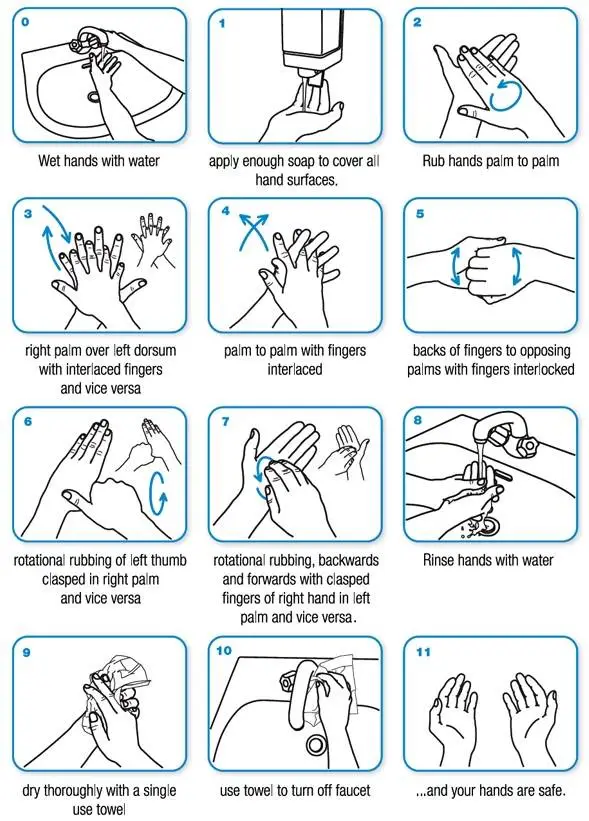Gloves Reduce Getting COVID-19 on Your Hands
And Wearing Masks Help to Prevent Touching Your Face
Let’s Clear Up the Mask Issue
COVID-19 can survive on surfaces for 3-5 days. You get it on your fingers from doorknobs, tabletops, shared computers, handshakes, restaurant saltshakers, etc. From there, you will unconsciously touch your face (up to 20 times an hour). It is an unbreakable habit. Repeated touches will move it to mucous membranes of the eyes, nose, mouth, and throat, and you get infected. Three to five days later you develop a dry cough and fever. My comments are aimed at breaking the cycle of surface-to-hand-to-mouth. This is mostly ergonomics and some biology.
The CDC recommends patients with COVID-19 wear a surgical mask to reduce the airborne spread, and that their caregivers also wear masks to reduce exposure. Surgical masks only block the flow of droplets attached virus. CDC does not recommend healthy people wear surgical masks, and I agree. You can make your mask with two to three layers of cotton T-shirt fabric and have performance compatible with a surgical mask (Cambridge University). The supply of masks is finite; if millions of healthy people have surgical masks, there won’t be any for medical caregivers.
You don’t need a surgical mask – any face covering will do – a scarf, a bandanna, a ski mask, or anything that separates your hands from touching your face. No amount of thinking, coaching, or reminders will break the habit of fingers going to the face. Something that covers the lower face works. You should have several so one can be worn while another is washed. Detergent destroys the virus. Do not use medical quality masks. You want to consign those to your medical providers and keep them safe. You, your parents, or your grandparents may need a healthy determined team in your corner.
Gloves Can Accomplish the Same End
The CDC recommends wearing latex gloves for medical caregivers, but not for healthy people. This is based on observations that people wearing latex gloves touch their faces with the gloves on, providing a transmission opportunity. Surgeons don’t touch their faces in the operating room, but they do outside.
A patient posed the question as to how to take a plane flight at low risk of acquiring COVID-19? Planes are pretty empty, so airborne risk was negligible (and air on planes is clean, it just doesn’t have any humidity, so it chafes the sinuses). The question is managing all the different surfaces — the cab, the tray table and armrests, seatbacks on the aisles, and the lavatory.
The answer is gloves. Either cotton-polyester work gloves or touch screen finger-tip gloves for smartphone use. I have no publications on this, but in twenty years of experience in the industry, I treated perhaps one case of facial contamination from gloves, and the employees worked with many noxious compounds. Gloves are an antidote to contaminated surfaces. Imagine how many hands have touched items on grocery store shelves, gas pump handles, change for your candy bar, packages delivered to your door, or the keys on your ATM. Once again, do not use medical quality latex gloves. You want to consign those to your medical providers and keep them safe. You, your parents, or your grandparents may need a healthy determined team in your corner.
My patient got multiple pairs of cotton polyester gloves, and, with a little instruction on the safe removal of gloves, flew back and forth to Seattle without incident. The gloves need daily cleaning, so get multiple pairs made from machine washable fabrics. Or for the touch screen gloves, made of dense polyester, wash them down with isopropyl alcohol between machine washes,
Don’t Forget Handwashing
In a study at MIT, if every traveler washed their hands on entering an airline terminal, pandemic spread would decrease by 70%. Proper handwashing is vigorous scrubbing with soap and water for at least 20 seconds. It takes roughly 20 seconds to sing Happy Birthday (or go to washyourlyrics.com for other song choices. There is an excellent diagram of Handwashing on the same site.) Hand sanitizer is helpful where a sink is not available. Wash your hands several times a day thoroughly. It’s more complicated than you might think so study a good diagram and be sure to get every surface.

COVID-19 Live Data
This data is updated hourly, and provided by Johns Hopkins University.

